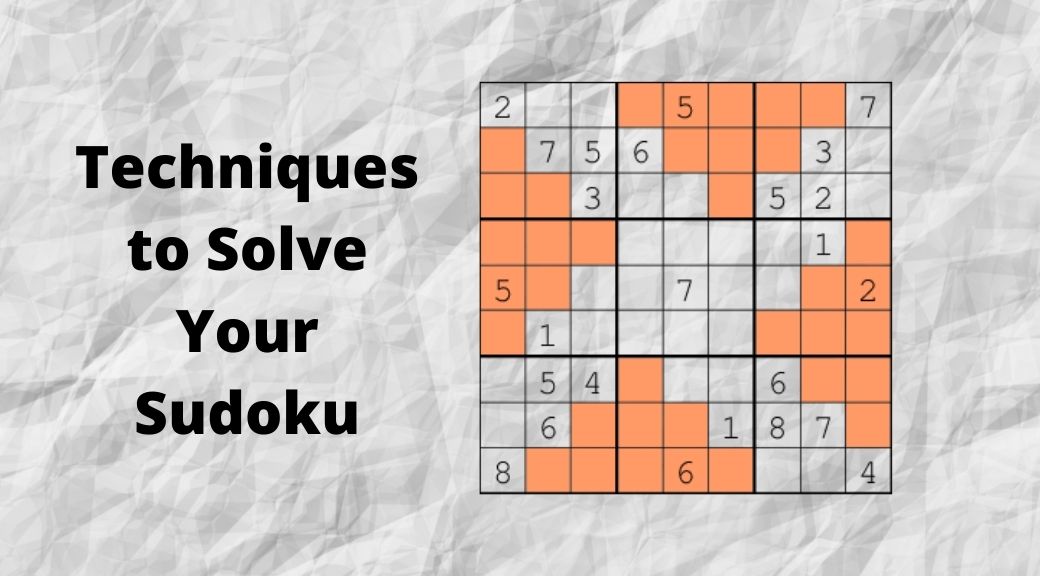If you’re here, chances are you’re already familiar with the rules of Sudoku. You’re probably just looking for techniques that can give you sure-shot solutions. Beyond the one rule of Sudoku, i.e., placing numbers 1 to 9 in all the rows, columns, and boxes, so they don’t appear more than once, lies a complex variety of tactics to solve these puzzles. This blog will explain a few of that infallible Sudoku solving techniques, so you don’t get stuck the next time.

Scanning
Amongst the most basic and straightforward techniques of Sudoku is scanning in one or multiple directions. Give the puzzle a good few minutes to scan through the possibilities and then go at it. First, use cross-hatching, i.e., scan the rows and columns to check if there’s a region that can accommodate a number through elimination. Second, speed up the solving time by counting 1 to 9 in all rows, columns, and boxes to determine any missing digits. These tricks work for easy to medium level puzzles, and it isn’t an advanced strategy.
Intersection
The intersection is an omission technique where you eliminate candidates from one or more cells. It’s also referred to as box/ line reduction wherein a candidate appears twice or thrice in a row or column as well as the same box. This way, you know that this candidate must appear in that row and column since it can’t be placed elsewhere.
Naked Sets
Naked sets, i.e., naked pair/ triples/ quads, are when you need to look for candidates that can be removed from other spaces, just by looking at them. For instance, a pair has two candidates in precisely two cells in a row, column, or box. Triples and quads are harder to spot but can be determined with practice.
X-Wing
You must know it’ll be there in those two cells for a candidate appearing twice in the same row. Upon the appearance of a second row with the candidate occurring twice, remember that the candidate would be in one of those cells. If these also fall in the same column, the solved digits will be diagonally over each other.
Y-Wing/ XY-Wing
Y-Wing is an excellent elimination technique. It looks like an X-Wing with three corners, and the fourth being the candidate that’s to be removed. So, a group of three cells where one shares a unit with others consists of two candidates. Each wing must share a candidate with the first cell with different values. But when the second candidate are both same sharing a unit with a familiar candidate at the fourth cell, that’s to be eliminated.
Bonus Technique – Swordfish
Swordfish uses a grid of around nine cells to eliminate the candidate. Apply this strategy when three columns or rows containing two or three of the given candidates aligned exactly on three rows or columns.
Now that you’re aware of these tricks try solving a Sudoku puzzle. You’d undoubtedly achieve success.
A gentle reminder, never rely on guesswork unless you’re sure you cannot do without it.
And remember to have fun at it. Happy puzzling!
Related Post:
